site search
online catalog
IDENTIFIED FORAGE CAP OF CHARLES H. GIBBS, 2nd MAINE CAVALRY, WITH REGIMENTAL NUMERAL, ALONG WITH LETTER OF PROVENANCE FROM HIS GREAT GRANDDAUGHTER
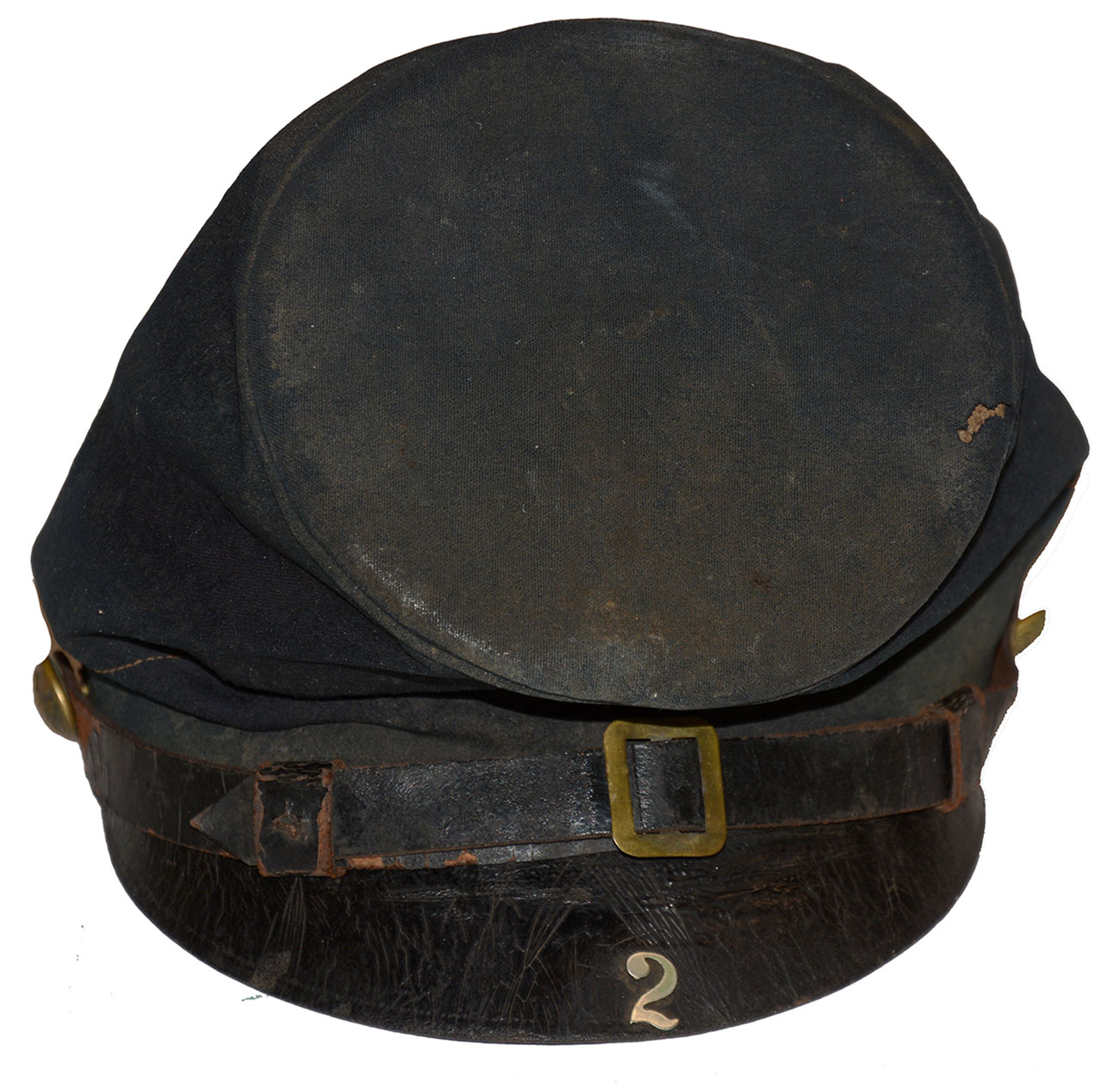
Hover to zoom

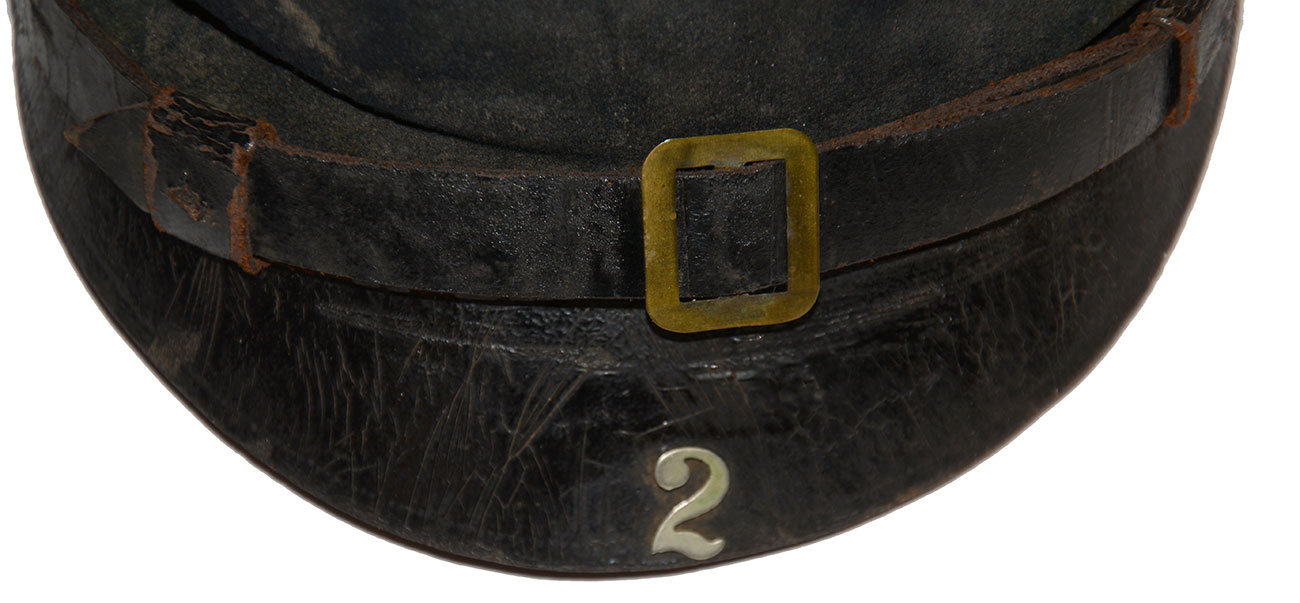
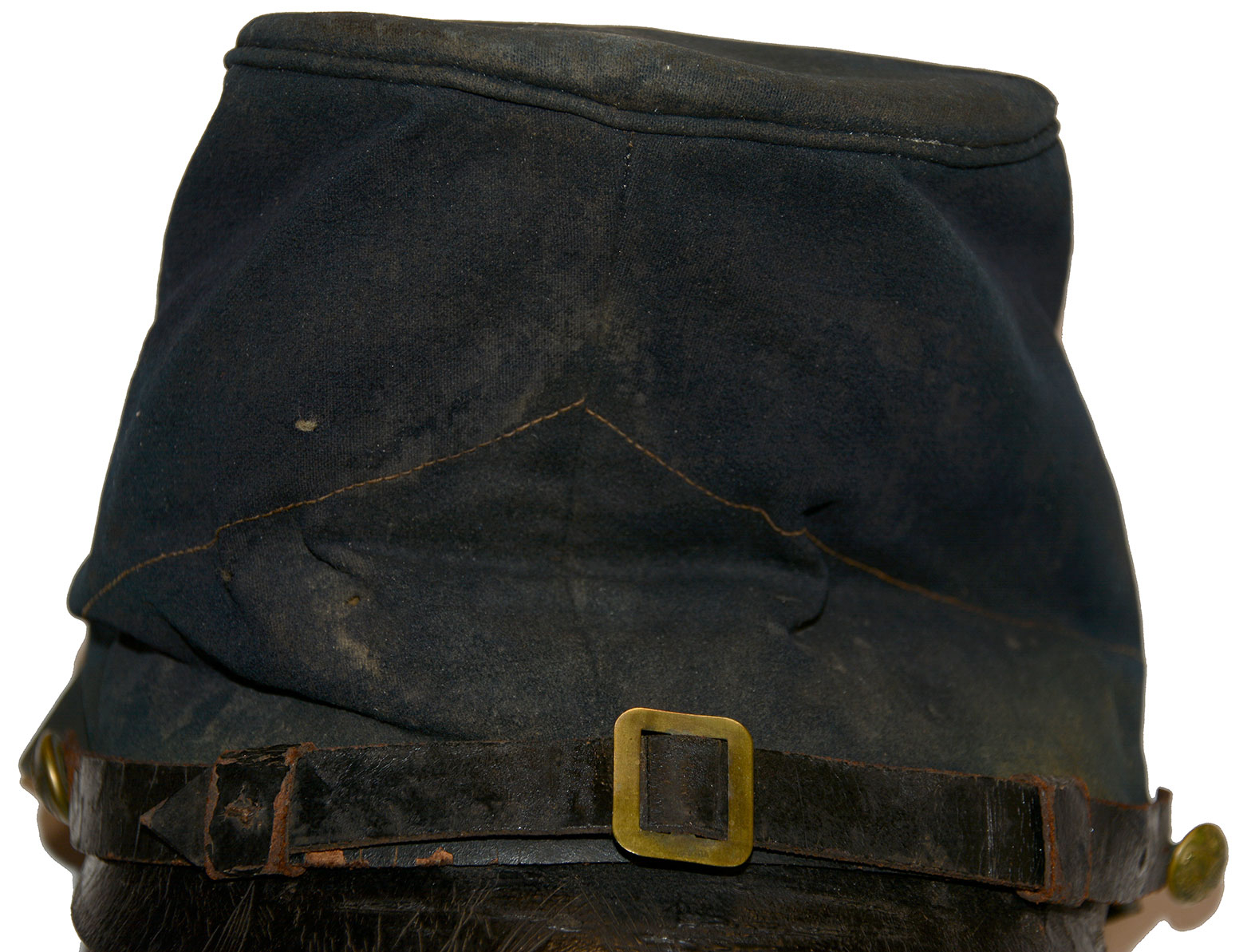
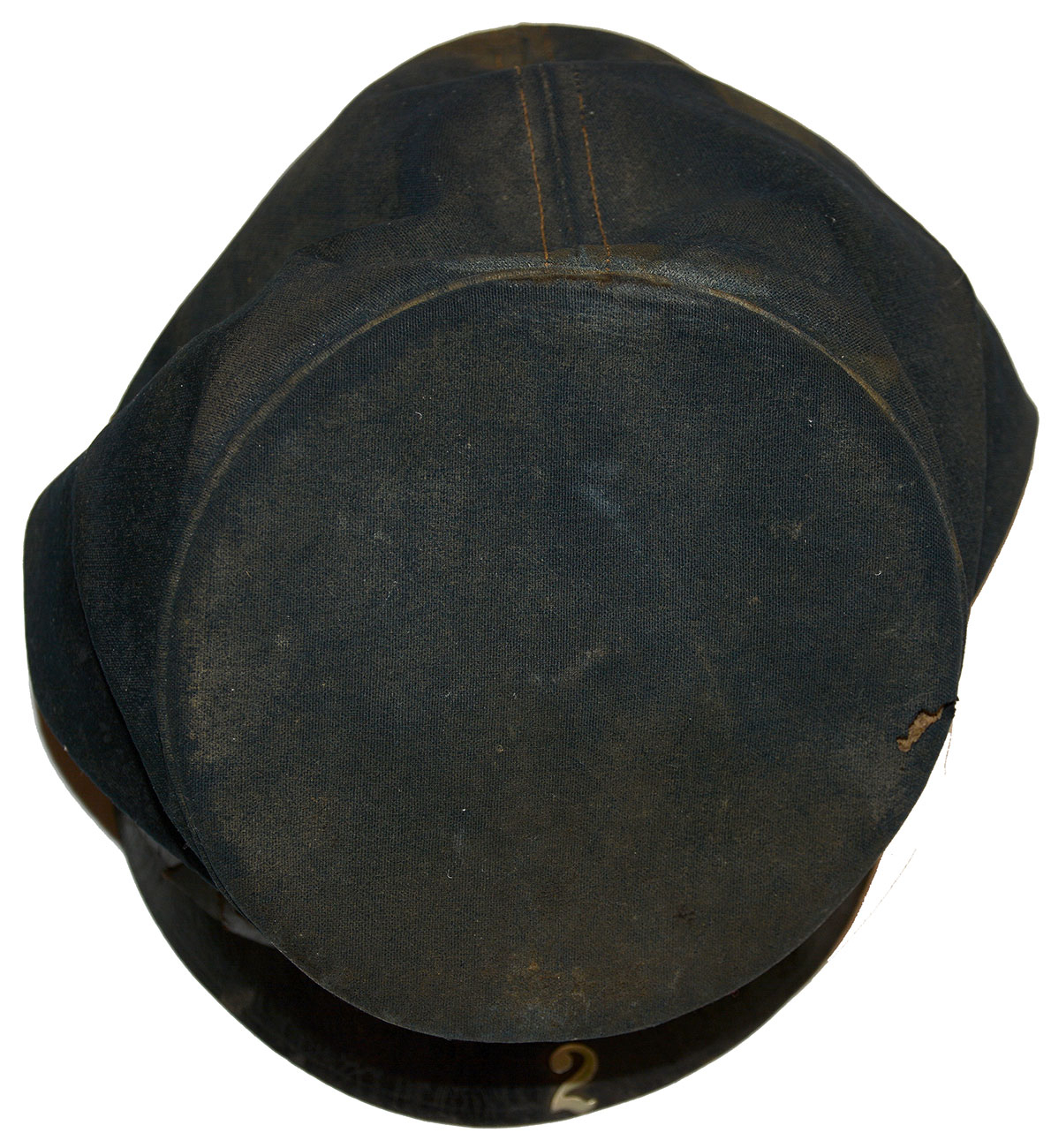
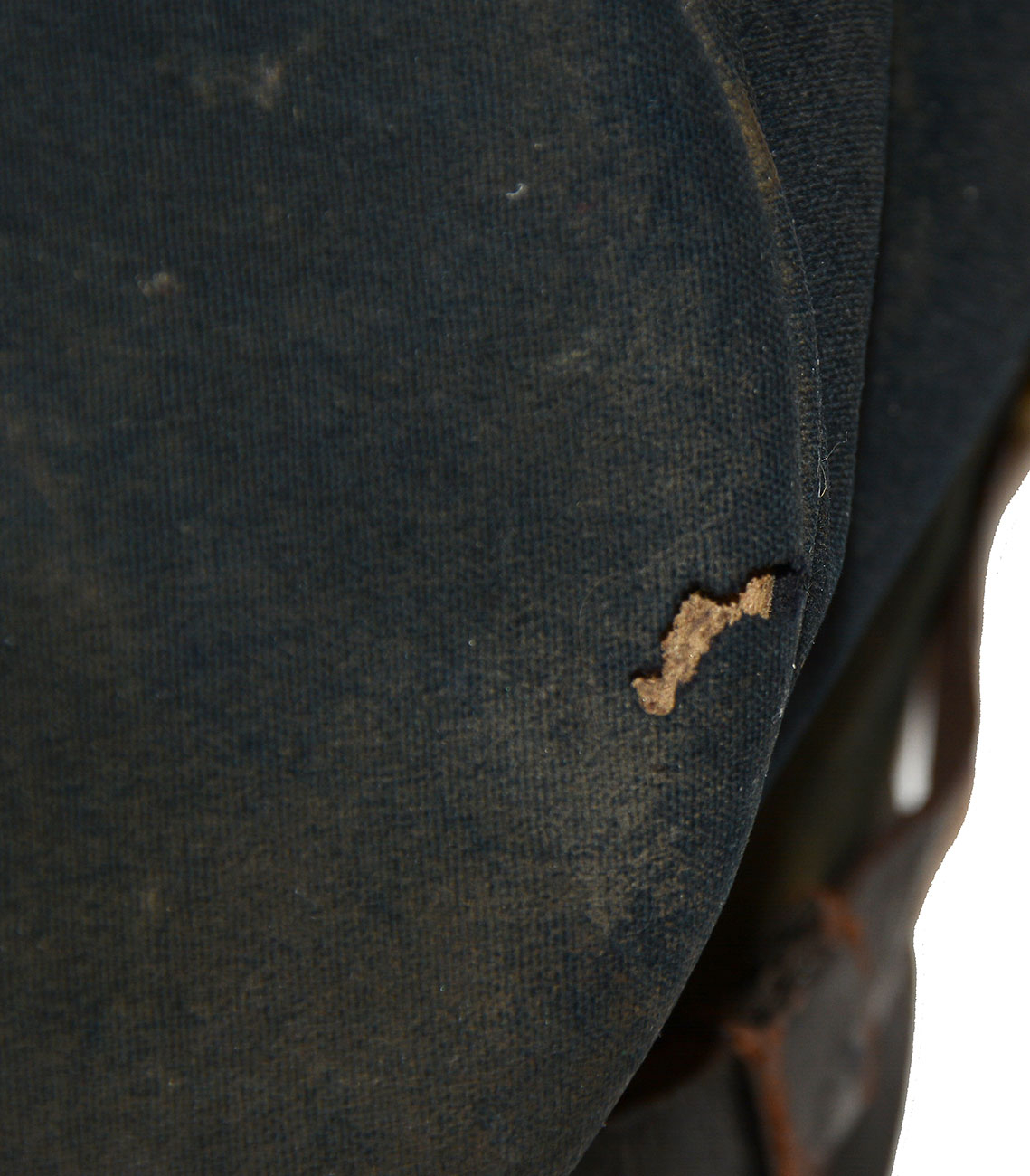
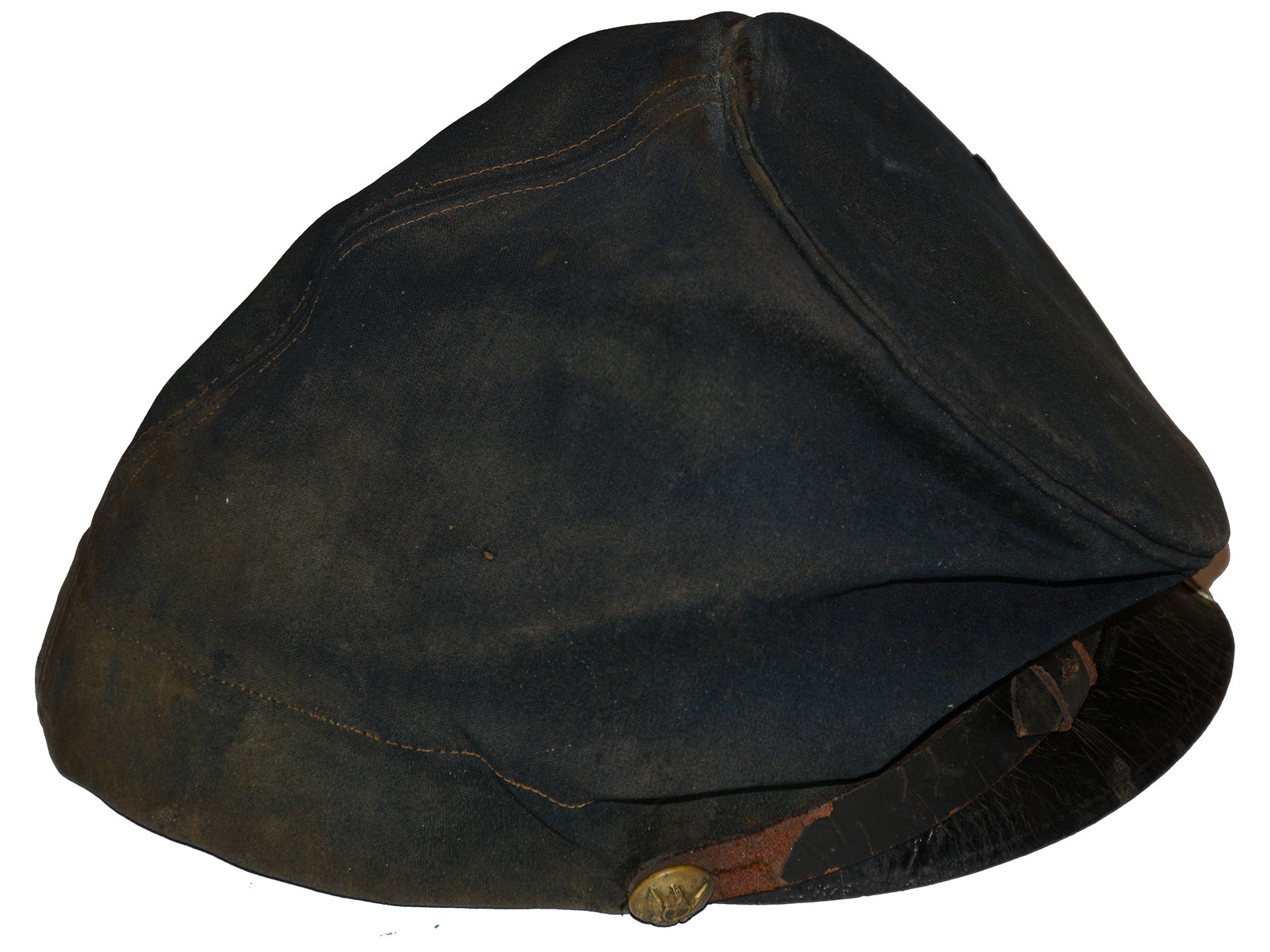
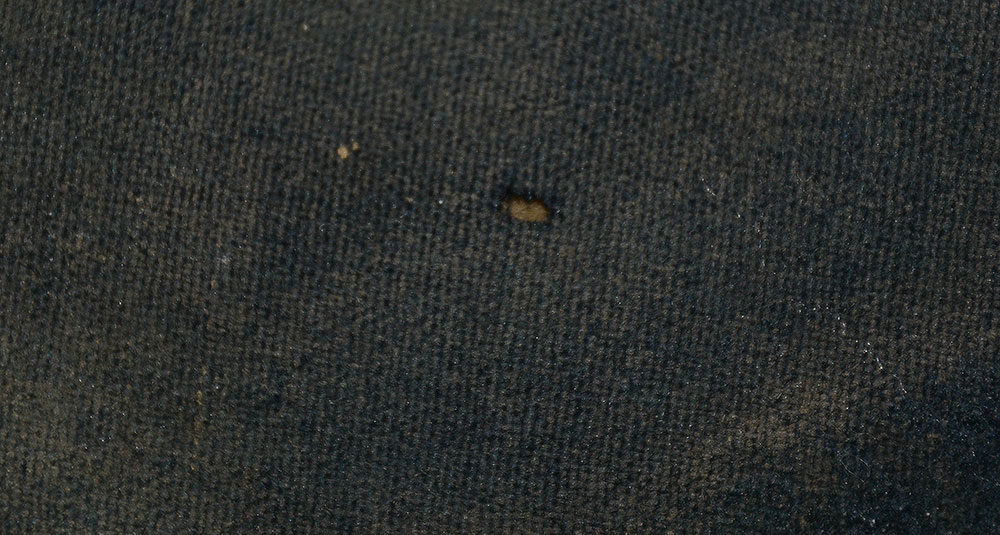
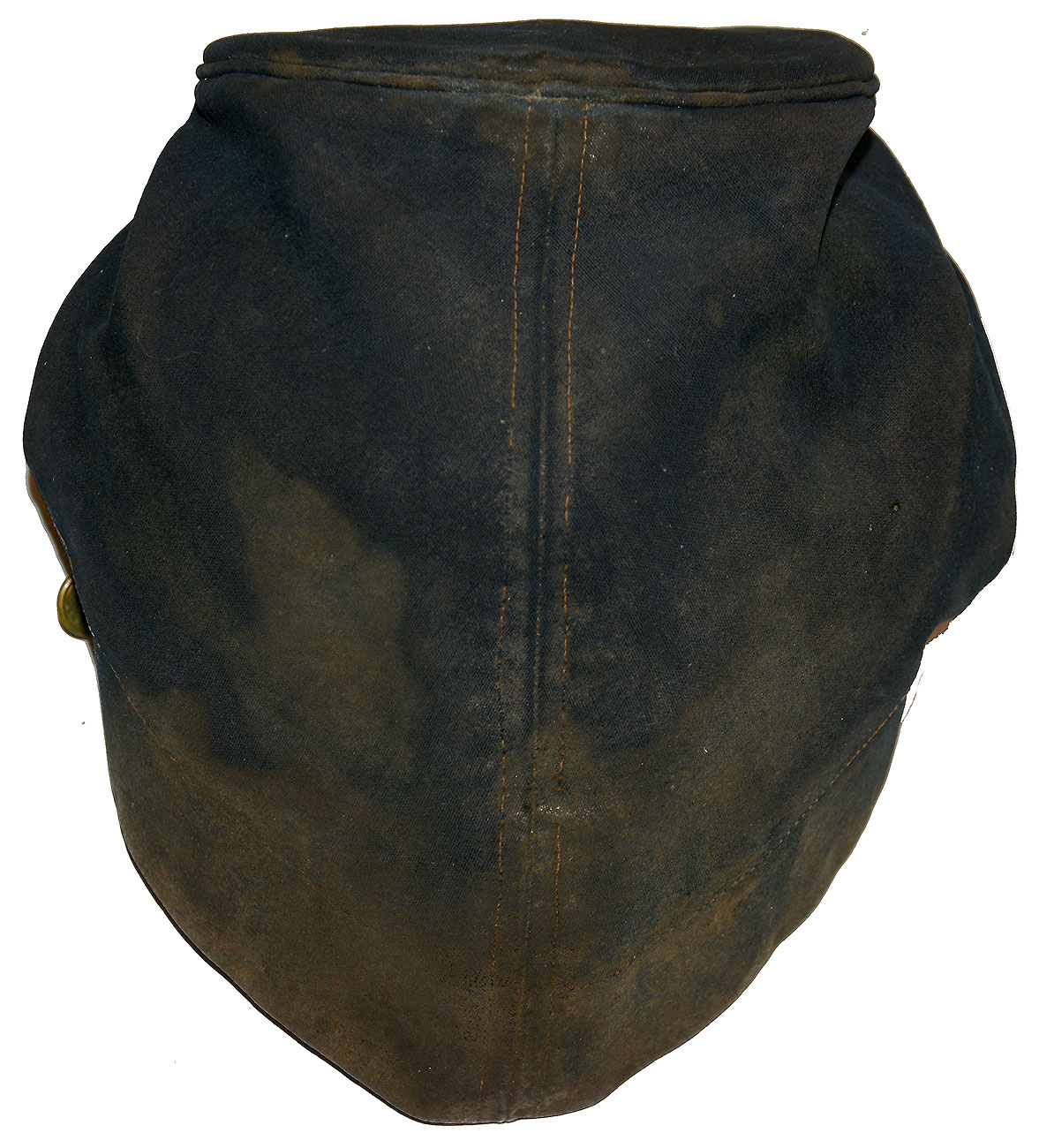
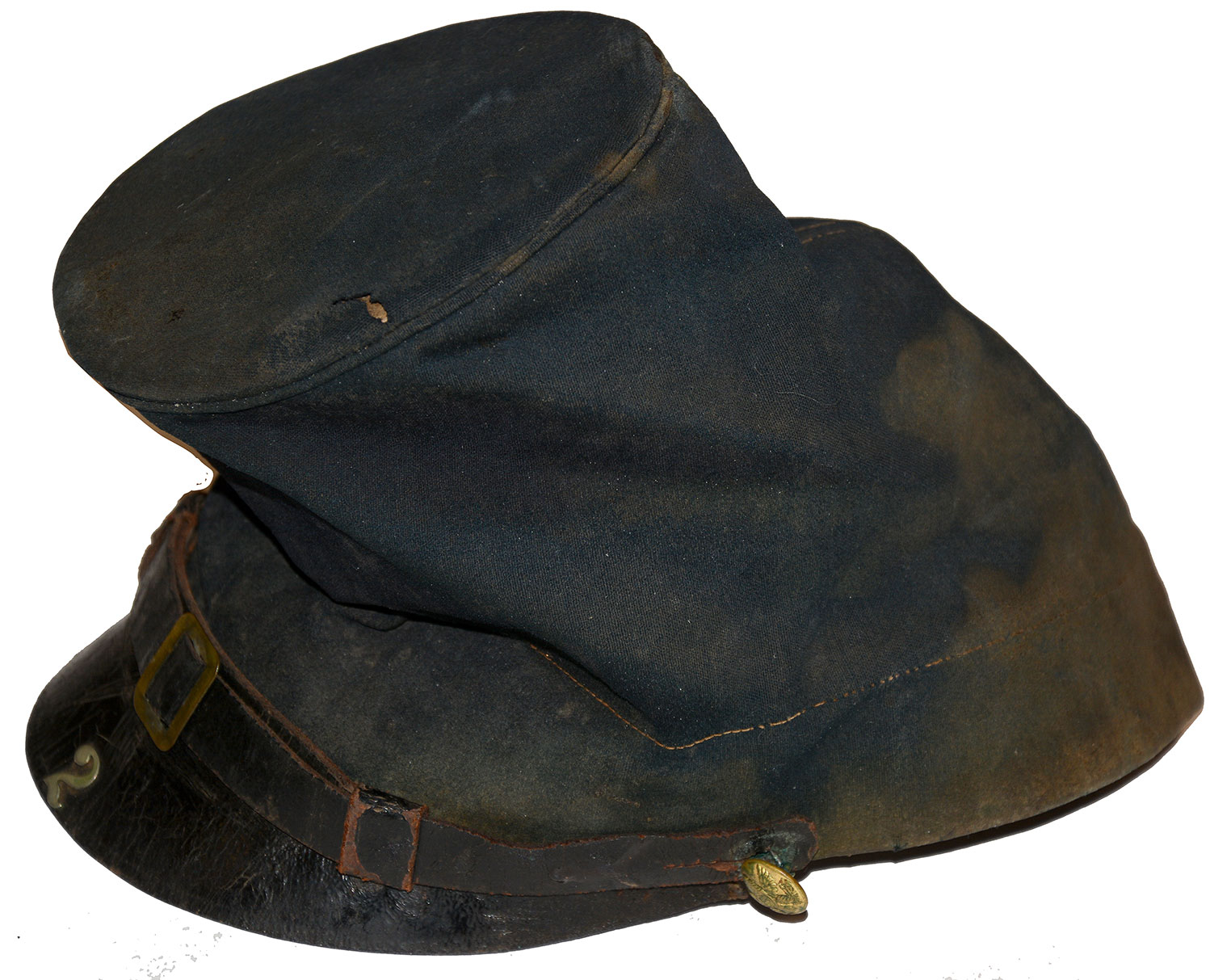
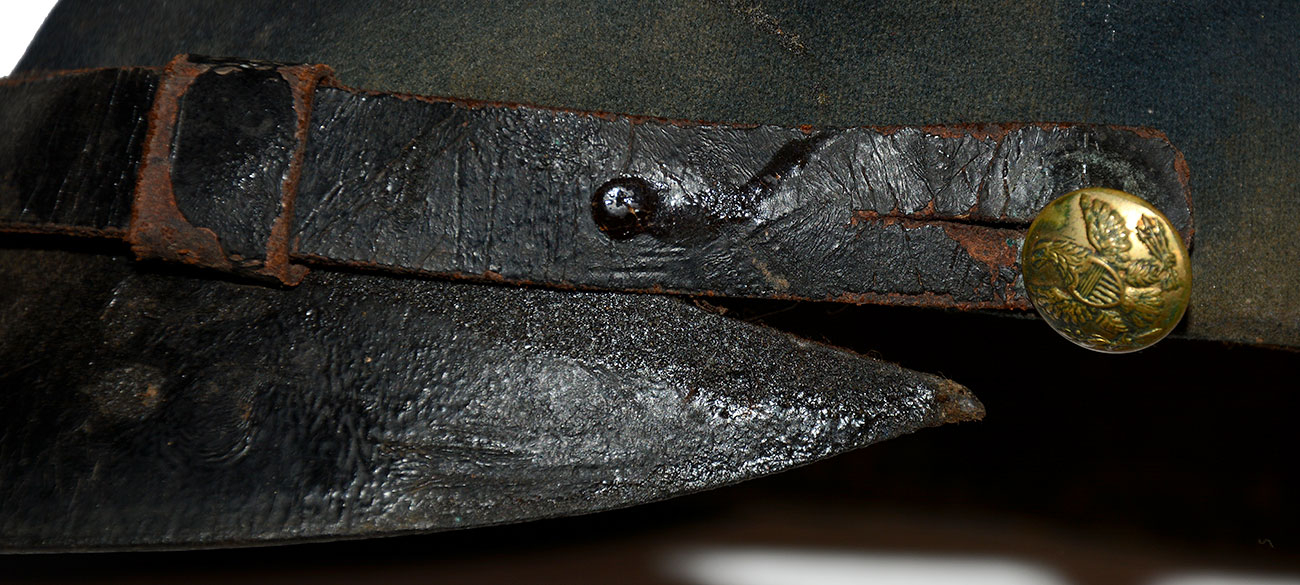
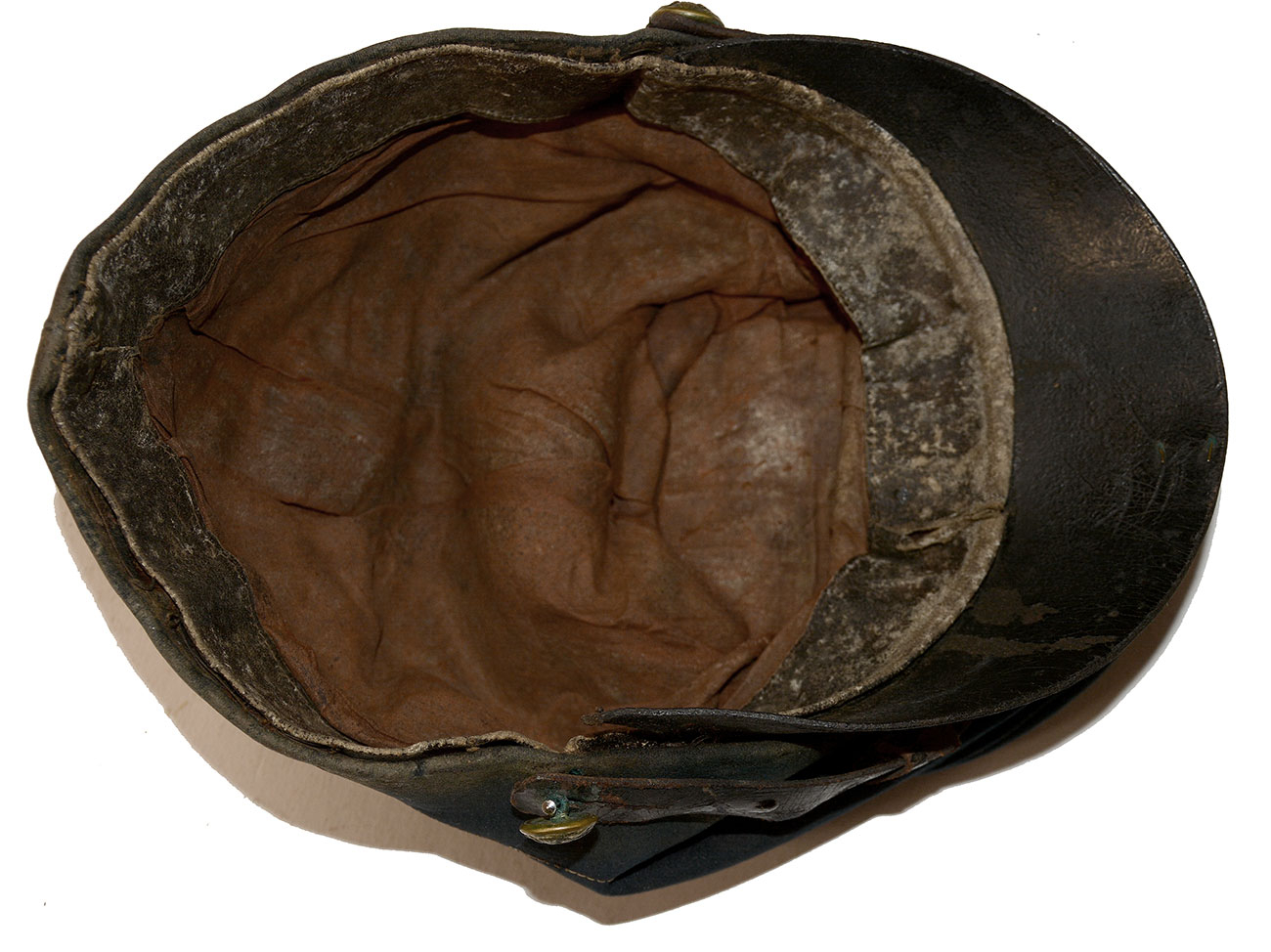
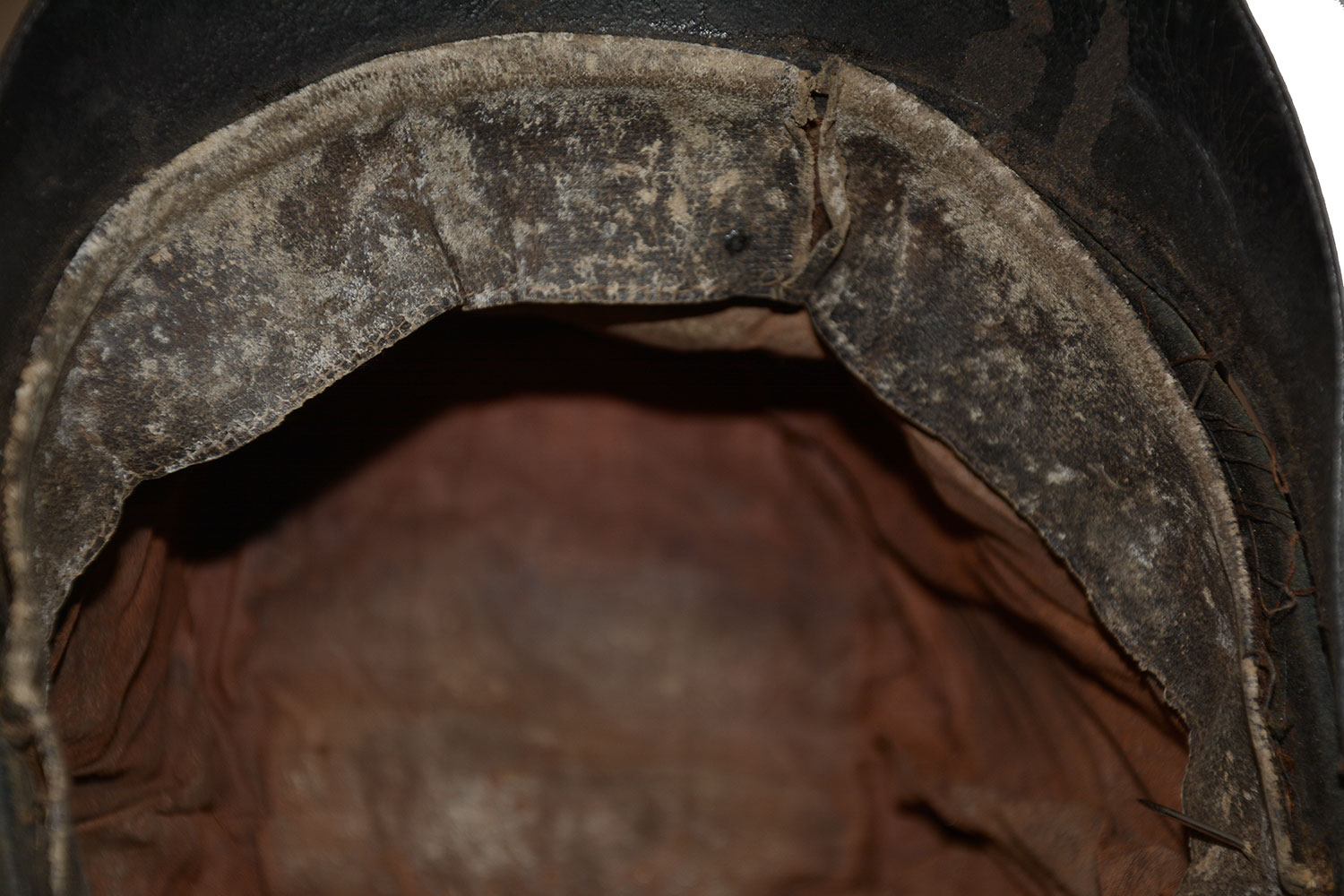
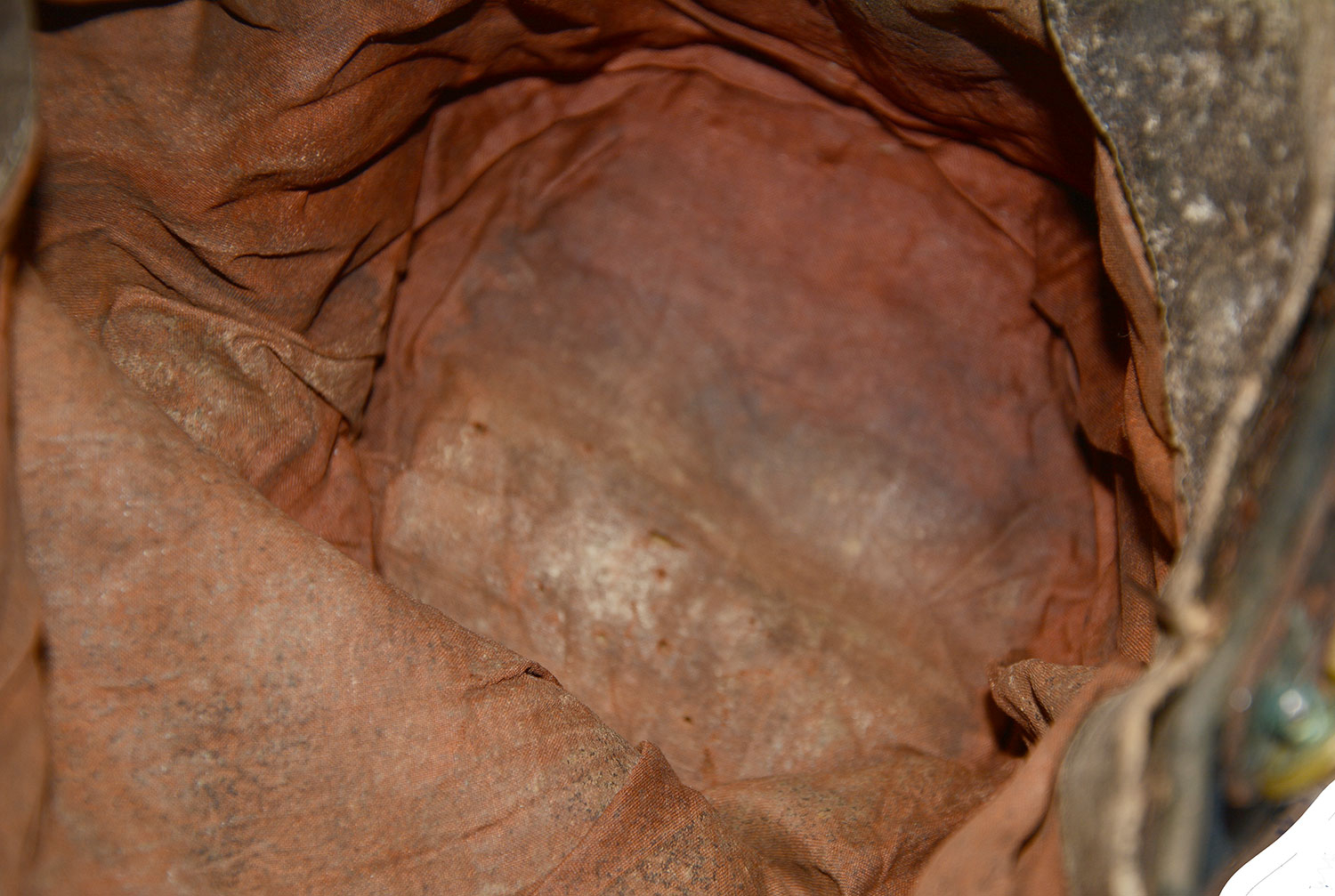
$6,000.00 SOLD
Quantity Available: None
Item Code: 1179-364
This is a great looking forage cap with an air-tight soldier identification, a regimental numeral on it, and showing some classic signs of field use. This has a stylish tall crown, rising 5 inches from the top of the visor in front, with the rear edge of top 6 inches in straight line up from the side buttons, and a full 8 inches along the rear seam of the body from the lower rear edge. The visor is firmly attached, a sloping crescent in shape, and the soldier, a member of the 2nd Maine Cavalry, attached silvered “2” on its lower edge to be visible below the chinstrap and the top of the cap, no matter how low he permitted it to flop forward. It might be considered a McDowell style, but shows the usual seam around a band at the base of the cap, one that rises to a peak at the cap’s front seam about 2 ¾ inches above the visor.
The chinstrap is a standard army issue style with two standing loops and a floating friction buckle between them. One side-button, on the wearer’s left, is an eagle-I and the other, a general service button, is there, but just pinned in place. The sweatband and lining are both in place, complete, and show similar wear, stains and soiling. The sweatband has just one tear over the wearer’s left eye, but much of the stitching along its lower edge is gone. The brown polished cotton lining is complete and in place, showing just a few scattered pinpoint holes.
The body of the cap is very good. We see just one pencil-point moth nip on the wearer’s upper right side and one small bite about 1/16 inch wide and ½ inch on the edge of top, on the wearer’s left, at about the three o’clock point when viewed from the front. The lower edge of the body shows some wear and soiling and does the very back, on the band, and above on either side of the rear seam, where it seems mostly soiling from the soldier naturally using the palm of his hand to smooth down the back edge of the cap when putting it on or adjusting it. Given that the soldier spent his service in the very warm climate of Louisiana and Florida, some stains from sweat and oils are not only acceptable, but to be expected.
Accompanying the cap is a 2003 letter of provenance signed by the Great Granddaughter Charles H. Gibbs and a color xerox of several of his veteran badges apparently retained by the family. Gibbs was born in Berwick, Maine, 25 September 1844, and listed as a farmer when he enrolled in Company L of the 2nd Maine Cavalry at Berwick. The regiment had been organizing late in 1863 and the men mustering in from November 30 through January 2, 1864. Gibbs is recorded as enrolling on December 23 and mustering in for three years on December 24 at Augusta, though some documents give the date as December 28 or even Dec. 31. He was described as age 19, 5’10” and of fair complexion with brown hair and blue eyes. A bounty may have influenced his decision to enlist. He received several hundred dollars in bounty money, paid to him in installments during his service.
The regiment was assigned to the Department of the Gulf and arrived in New Orleans in April in five detachments, the first of which (two companies and part of a third) took part in the Red River campaign and saw action in several engagements as part of the 3rd Cavalry Brigade. The regiment was reunited in June and in August was transferred to Florida and posted near Fort Barrancas at Pensacola. They saw field service in raids on Milton, Marianna, Blackwater Bay, Pine Barren Creek, Pollard (Alabama,) and elsewhere. The latter on Pollard resulted in several sharp fights and constant harassment of their supply train. The regiment was engaged again at Milton, Florida, in February 1865 and in March joined Steele’s expedition against Mobile, destroying enemy rail lines, engaging in fights at Evergreen, Muddy Creek, and Fort Blakely, and after the fall of Mobile joined the 16th Corps in marching on Montgomery. They were retained in service on occupation and peace-keeping duties in west Florida until finally mustering out in December 1865.
The regiment recorded 10 battle deaths or mortal wounds, which implies four or five times that in wounded who recovered to some degree. By far, however, their largest losses were to the climate, sickness and disease, which (with accidents) cost the regiment 334 dead by muster out. Gibbs seems to have barely escaped that fate. He is reported as present on all his company muster rolls until the March-April 1865 roll and subsequent documents when he is reported as absent sick in the General Hospital at Barrancas since April 21. He received a certificate of disability for discharge dated May 18 and was officially mustered out on June 3, but a surgeon’s notation indicates he had been off duty for about eight months with chronic diarrhea contracted while in the service.
Gibbs survived to return home, marry in 1869, and father three daughters, one of whom died tragically at age 12. He was survived by his two remaining daughters and his wife when he died in 1915. He was reported to have retired about eight years before that and had been in ill health, either from Bright’s Disease, to which his death was attributed, or from the effects of being “thrown from a team.” He had changed from farming to mill work, becoming a foreman, and eventually starting his own business with a partner, making sashes and blinds. He was a member of several fraternal organizations and, judging by the photo of his medals, an officer in the G.A.R. at both the Post and Department level. His wife survived to age 96, dying in 1946.
This hat has remained untouched since coming out of the family, has never been in the hands of a conservator and in our opinion does not need it and should remain untouched. This is a great example of a cap showing just legitimate field wear and use fitting the soldier’s service. It is great style, displays very well, and would be a great addition to a headgear, uniform, cavalry, or Maine related collection. [sr] [ph:L]
~~~~~~~~~~~~~~~~~~~~~~~~~~~~~~~~~~~
THIS ITEM, AS WITH ALL OTHER ITEMS AVAILABLE ON OUR WEB SITE,
MAY BE PURCHASED THROUGH OUR LAYAWAY PROGRAM.
CLICK HERE FOR OUR POLICIES AND TERMS.
THANK YOU!
Inquire About IDENTIFIED FORAGE CAP OF CHARLES H. GIBBS, 2nd MAINE CAVALRY, WITH REGIMENTAL NUMERAL, ALONG WITH LETTER OF PROVENANCE FROM HIS GREAT GRANDDAUGHTER
Most Popular
Historical Firearms Stolen From The National Civil War Museum In Harrisburg, Pa »
Theft From Gravesite Of Gen. John Reynolds »
Selection Of Unframed Prints By Don Troiani »
Fine Condition Brass Infantry Bugle Insignia »
Large English Bowie Knife With Sheath 1870’S – 1880’S »
Imported (Clauberg) Us Model 1860 Light Cavalry Officer's Saber »
featured item
SILVERED PRESENTATION FIFE TO MARTIN MURPHY, 4th NEW YORK VOLUNTEERS, 17th NY VETERAN ZOUAVES, AND REGULAR ARMY
This elegant silvered fife, 15-1/4” long, bears a great presentation and was carried by a company musician with Civil War service in two New York regiments, one of them a zouave regiment, and substantial service in the regular army. He seems to… (1268-167). Learn More »


